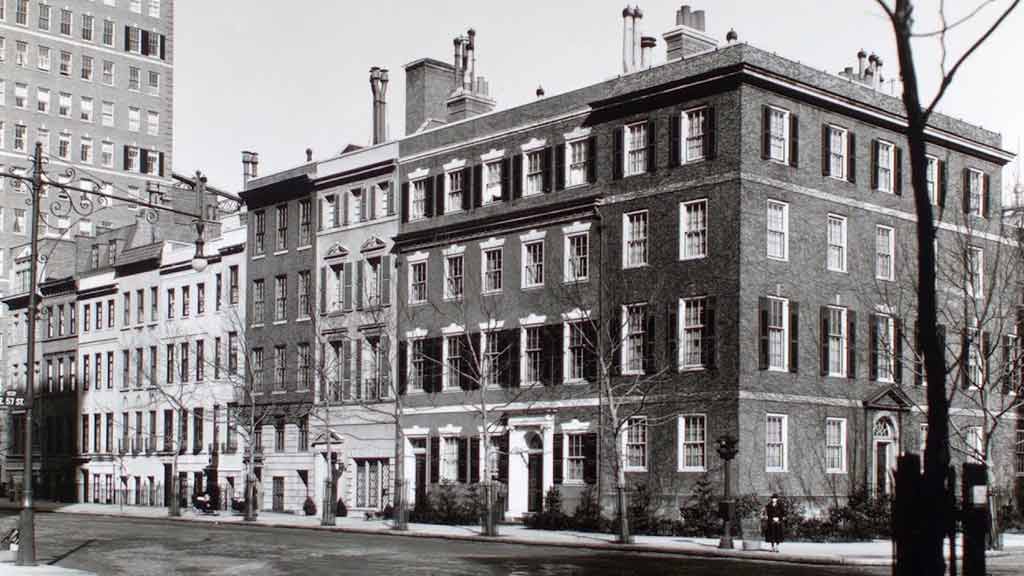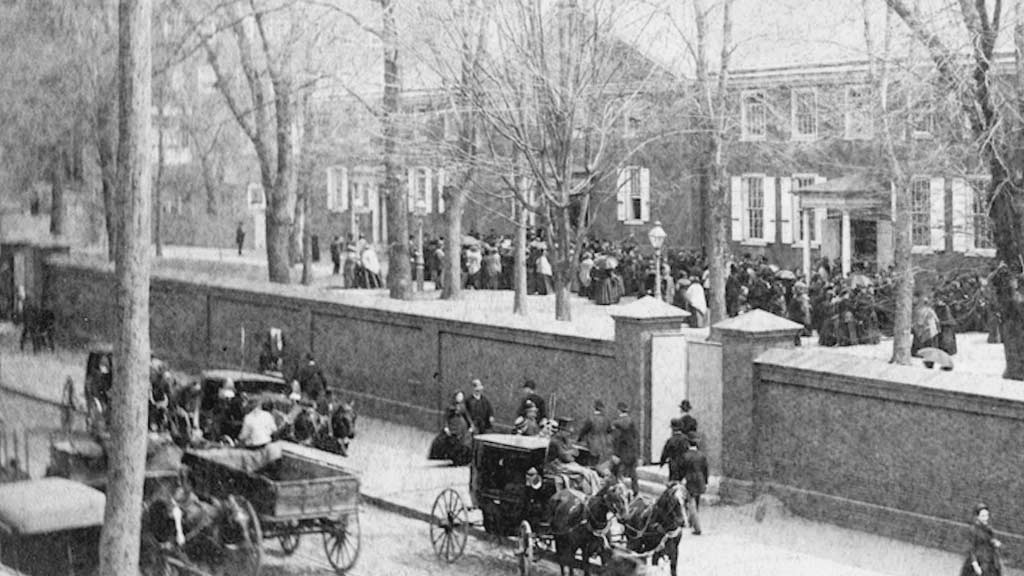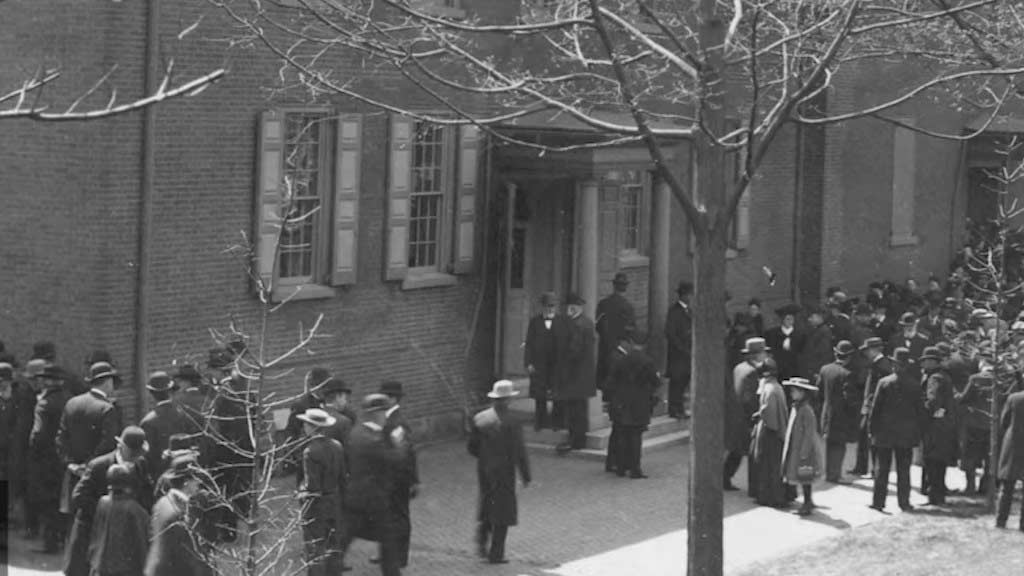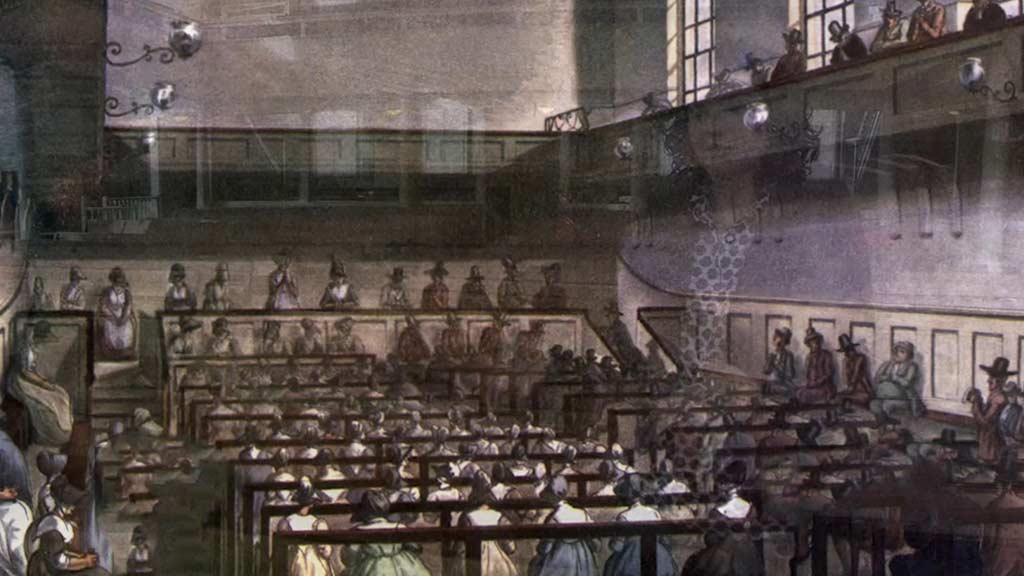Explore the rich history of Arch Street in Boston, a place steeped in tradition and significance. Dating back to the mid-19th century, the Franciscans have played a pivotal role in shaping the landscape of this iconic area.
From the founding of the first Italian parish in the United States, St. Leonard’s Church, to the establishment of a vibrant downtown ministry during World War II, Arch Street has been a hub of spiritual activity for decades.
Witness the evolution of this historic site as it transformed into a bustling center of faith and community. With the debut of the structure at 103 Arch Street on Ash Wednesday in 1947, a new chapter began for the Franciscan friars.
The shrine quickly became a focal point, drawing in hundreds of thousands for confessions and daily masses.
As the need for a larger shrine became apparent, the current landmark at 100 Arch Street emerged in the 1950s, solidifying its place as a cornerstone of Boston’s religious heritage.
The Early Days of Arch Street Boston
Arch Street in Boston holds a significant historical importance, representing the early days of the city’s development and serving as a nexus for various social, cultural, and economic activities.
Its origins trace back to the colonial era, embodying the spirit of resilience and innovation that characterized Boston’s growth.
Franciscan Friars Arrival in Boston in the 19th Century
In the 19th century, the Franciscan Friars made a significant impact on the history of Arch Street in Boston. Their arrival marked the beginning of a rich religious heritage in the area, shaping its cultural fabric for decades to come.
The Franciscans’ presence brought a sense of community and spirituality to Arch Street, laying the groundwork for the development of faith-based institutions that would define the street’s identity.
Role of St. Anthony Shrine in the 19th Century
St. Anthony Shrine played a crucial role in the religious landscape of Arch Street during the 19th century.
As a beacon of faith and outreach, the Shrine served as a spiritual hub for locals and visitors alike, fostering a sense of belonging and unity among the diverse community that called Arch Street home.
The Shrine’s presence exemplified the values of compassion, service, and faith that have been integral to the history of Arch Street Boston.
Arch Street’s Transformation in the 20th Century

Arch Street underwent significant transformations during the 20th century, reflecting the evolving urban landscape and socio-economic dynamics of Boston.
From its role as a bustling commercial hub to its adaptation to changing times, Arch Street’s journey mirrors the broader narrative of urban development in the modern era.
Major Developments and Architecture Advancements
In the 20th century, Arch Street in Boston underwent significant transformations, shaping its current landscape. The district saw remarkable advancements in architecture, blending historical elements with modern structures to create a unique urban environment.
The construction of iconic buildings like the Tower at 101 Arch Street in 1988 showcased a fusion of traditional and contemporary design, reflecting the area’s rich architectural history combined with innovative approaches to urban development.
The Role of the Tontine Crescent
One notable feature contributing to the transformation of Arch Street is the Tontine Crescent. This architectural ensemble, established as a speculative real estate venture in the early 19th century, played a crucial role in shaping the urban fabric of Boston.
The Tontine Crescent exemplified early urban planning principles, introducing a cohesive architectural style and curated streetscape that influenced the development of the surrounding area.
The presence of the Tontine Crescent symbolizes the district’s historical significance and its evolution into a vibrant hub of architectural creativity and urban planning in Boston.
Arch Street in the 21st Century
Arch Street in 21st century Boston has evolved significantly, reflecting the city’s blend of history and modernity. Once a modest thoroughfare in the heart of the city, it has transformed into a bustling hub of commerce, culture, and innovation.
Arch Street’s Place in Modern Boston

Arch Street remains a vital part of the evolving landscape of Boston in the 21st century. The area’s rich history, coupled with its strategic location, continues to attract attention and development.
As a significant intersection point between Summer Street and Arch Street, this district stands as a testament to Boston’s architectural diversity and historical significance.
With its historical significance and strategic location, Arch Street in Boston serves as a prime example of the city’s architectural diversity. This district is a key intersection point connecting Summer Street and Arch Street, attracting attention and development in the 21st century.
Architectural Fusion at 101 Arch Street
One notable architectural landmark that symbolizes the fusion of history and modernity is the Tower at 101 Arch Street. This 21-story office tower, built in 1988, seamlessly blends the authentic facade of the historic Harvard Building with contemporary granite-clad structures.
Featuring a mix of old-world charm and modern amenities, 101 Arch Street serves as a prime example of Boston’s commitment to preserving its architectural heritage while embracing innovation.
Revitalizing Downtown Crossing
101 Arch Street’s presence in the bustling Downtown Crossing area reflects the city’s ongoing revitalization efforts. The building’s unique design and mixed-use spaces contribute to the area’s vibrancy, attracting businesses, residents, and visitors alike.
By creating a harmonious blend of historical preservation and modern functionality, Arch Street plays a crucial role in shaping Boston’s urban identity and cultural landscape in the 21st century.
Impact of Arch Street’s History on Its Current Tenants

Arch Street’s rich history significantly influences its current tenants, shaping the atmosphere and character of the area.
Here are some ways in which the street’s past impacts its present occupants:
Influence of History on Architecture and Occupancy
The historical significance of Arch Street in Boston has had a profound impact on the architecture and occupancy of the buildings in the area.
The blend of historical authenticity with modern design elements, exemplified by the Tower at 101 Arch Street, has attracted a diverse range of tenants looking for a unique and vibrant workspace.
The architectural advancements that have shaped the district, preserving the historic facades while incorporating contemporary features, contribute to the appeal of the buildings to current tenants seeking a mix of tradition and innovation in their office spaces.
Tenant Amenities and Sustainable Practices
The historical context of Arch Street has also influenced the amenities and sustainable practices offered to current tenants.
The renovation of 101 Arch Street in 2019 not only included tenant amenity spaces such as a fitness center and conference rooms but also prioritized sustainable features.
Being LEED Gold certified and awarded the Energy Star Rating annually since 2009, the building reflects a commitment to environmental responsibility and provides a comfortable and eco-friendly workspace for its occupants.
These amenities and practices align with the modern demands of tenants who seek environmentally conscious and convenient facilities for their businesses.
Access to Transportation and Community Engagement
One of the key aspects influenced by the history of Arch Street is the direct indoor access to the MBTA’s Orange, Red, and Green subway lines provided by 101 Arch Street.
This convenient transportation access enhances the connectivity of the building with the greater Boston area and facilitates easy commutes for tenants.
Additionally, the engagement with the local community, reflected in the building’s amenities and events, creates a sense of belonging and connectedness for the current occupants.
The historical legacy of Arch Street as a central hub in Boston’s financial district continues to shape the building’s role as a vibrant and accessible workspace for its tenants.
The Changing Neighborhood and Its Effects on Arch Street

The evolution of the neighborhood surrounding Arch Street in Boston has had a profound impact on the area’s historical significance and its relevance to contemporary occupants.
Over the years, the changing landscape has influenced the atmosphere and amenities available to tenants in buildings like the Tower at 101 Arch Street.
As Boston’s Downtown Crossing district undergoes revitalization, Arch Street has experienced a transformation from its 19th-century roots to a modern, bustling commercial hub.
The blend of historic charm and modern functionality in buildings like the Tower at 101 Arch Street reflects the neighborhood’s journey through time.
With the revival of forgotten glamour and character within the area, Arch Street has become a sought-after location for businesses seeking a unique blend of history and innovation.
The fusion of past and present elements in the architecture and amenities of buildings along Arch Street showcases a commitment to preserving legacy while embracing progress.
The 101 Arch Street renovation project, with its restored lobbies, conference facilities, fitness center, and amenity spaces, stands as a testament to how the changing neighborhood dynamics have influenced the modern-day office spaces in the area.
The seamless integration of historical references with contemporary design elements caters to a diverse community of tenants seeking a vibrant and dynamic workspace experience.
FAQs
What historical elements are covered in the article about Arch Street in Boston?
The article delves into the historical evolution of Arch Street, focusing on the influence of Franciscan Friars, the establishment of St. Leonard’s Church, and architectural advancements shaping the district.
How has Arch Street transformed in modern times?
Arch Street has evolved into a bustling commercial hub while maintaining its historic charm. The changing neighborhood dynamics have attracted a diverse community, exemplified by renovation projects like 101 Arch Street.
Why is Arch Street’s legacy significant in Boston’s urban landscape?
Arch Street’s legacy continues to be vital in Boston, attracting traditionalists and innovators. Its rich history and modern amenities cater to a mix of tenants, reflecting a fusion of past and present elements.
Conclusion
Arch Street in Boston stands as a testament to the city’s rich historical tapestry, blending tradition with modernity seamlessly.
From its roots with the Franciscan Friars to the vibrant commercial hub it is today, Arch Street has evolved while preserving its unique charm.
The architectural transformations and renovation projects reflect a harmonious coexistence of past and present elements, catering to a diverse community of tenants.
As Boston’s urban landscape continues to evolve, Arch Street remains a beacon for those who appreciate its historical significance and contemporary amenities.
Its legacy endures, attracting a mix of individuals who seek a dynamic workspace experience within a setting steeped in history.
Jaclyn Lowe